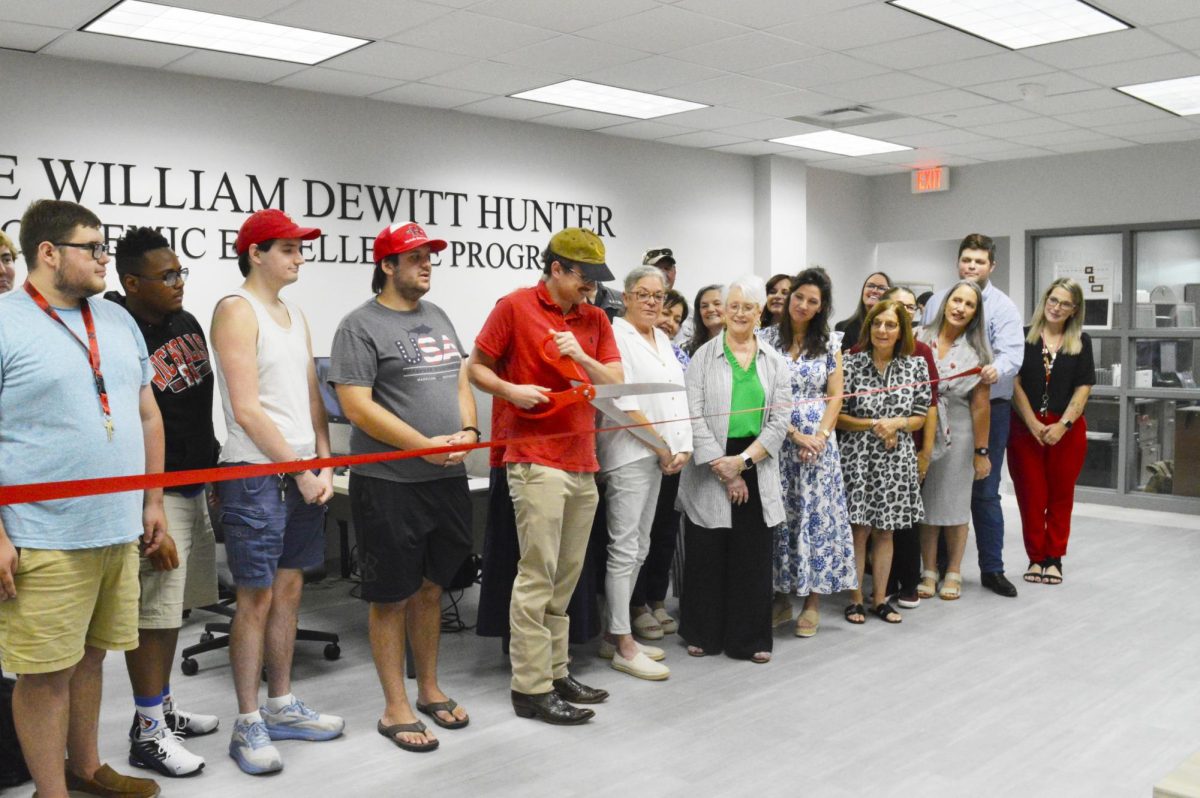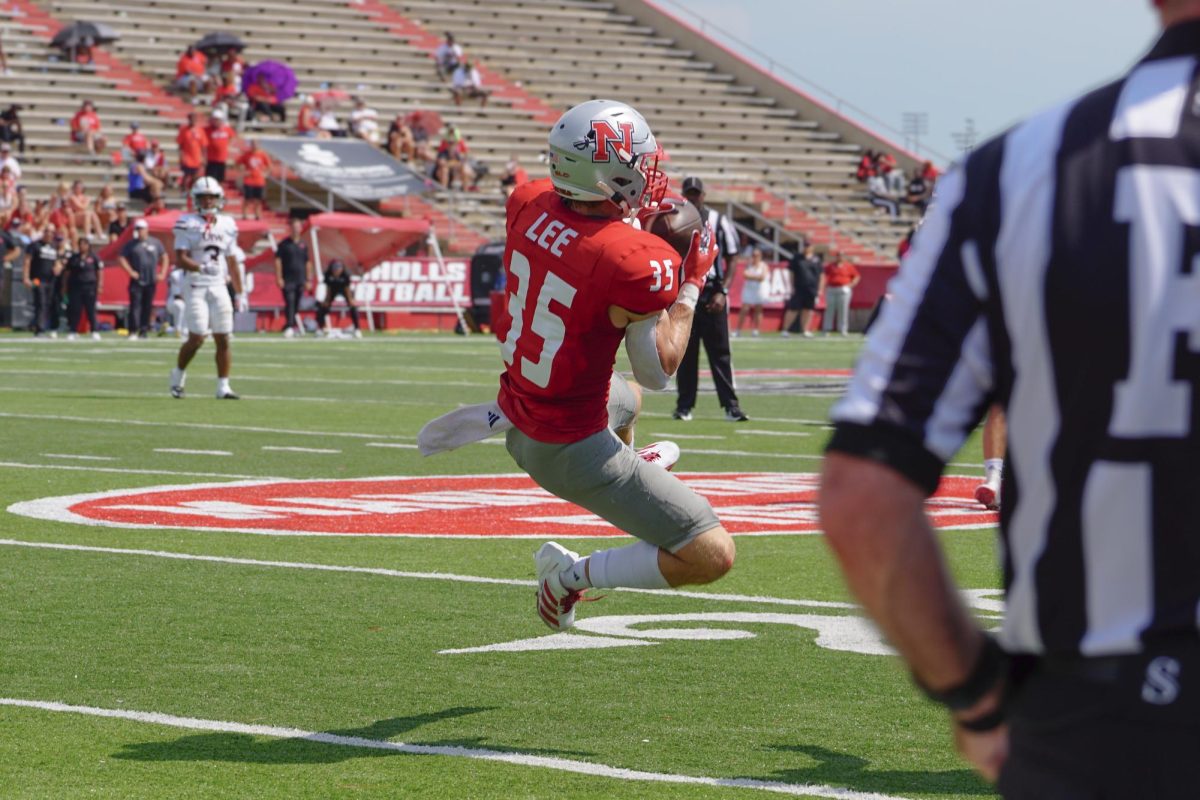The Louisiana Board of Regents for higher education has awarded Nicholls with a record amount of money.Nicholls has received funding for ten proposals worth more than $500,000 for the 2001-2002 fiscal year from the board’s support fund. It is the largest amount ever received by the university in a fiscal year.
The departments that received grants were the department of biological sciences, health and physical education, health services, the art department, the agriculture department and the department of nursing.
Department of Biological Sciences
The department of biological sciences obtained the majority of the grants.
“The biology department received six of the grants awarded. Every grant that our faculty wrote to the Board of Regents we received, and I am really pleased about that. Our faculty has worked together really hard to obtain equipment for the department,” said Dr. Marilyn B. Kilgen, head of the department of biological sciences.
Kilgen was awarded $157,845 for the research project “Evaluation of Hydrostatic High Pressure Processing for Mechanical Shucking, Pathogen Control, Shelf-Life Extension and Sensory Impacts in Oysters from the Gulf, East and West Coasts of the United States.”
The project is a three-year collaboration with Motivatit Seafoods of Houma to evaluate the commercial use of high pressure processing technology in shellfish.
“I have worked with Motivatit Seafoods for 20 years. They have always been on the cutting edge of research. One of the things that I have helped them to develop is a new technology to treat raw oysters and to eliminate natural bacteria that could be potentially harmful to certain individuals that have poor immune systems,” Kilgen said.
Motivatit Seafoods has had a commercial high pressure unit developed to specifically treat oysters.
“There have been a lot of different techniques tried for this, but hydrostatic water bypressure has promised to be very effective at the commercial level,” Kilgen said.
Dr. Ramaraj Boopathy, assistant professor of biological sciences, was awarded $20,000 for “Development of Environmental Science Instrumentation Core Facility.” Boopathy plans to buy a high performance liquid chromatography instrument.
“Basically this instrument analyzes chemicals in the water and soil, contaminates like petroleum oil spills, pesticides, anything in the environment,” Boopathy said.
A primary benefit of the instrument is not only its capabilities, but its speed as well. No such instrument has been previously available in the department.
“It is capable of accurate analysis, very precise, faster analysis, and we can handle a high volume of samples. It’s all automatic, and basically you plug the sample into the computer, set the program and come back and enter the data,” Boopathy said.
Another grant awarded to biological sciences has been to assistant professor Dr. Gary Lafleur, who received $45,000 for “Revitalization of Cell Imaging for Environmental Physiology.” The purpose of the project is to revitalize the microscope facilities in the environmental physiology department.
“We have a good tradition in our department of doing microscope work. We have a lot of cool equipment from about 10 years ago. Well, I inherited much of that, and a lot of it hasn’t really gone out of date, it is still relevant. But we also need some of the modern tools to compliment that. What I am trying to do is just revitalize what’s already in place. Get the new stuff so we can use the old stuff again,” Lafleur said.
Lafleur explains that the new microscopes will be used for teaching higher level students how to do research.
“What we’re really trying to do here is not to just teach lecture material, but teach students how to do research, and you can’t teach how to do research with a book. What you have to do is have one-on-one time with a student, and for this you need to use good modern equipment” Laufleur said.
Additional grants awarded to the biology department are to Dr. Julie Gauthier, Dr. Timothy Beary, and Dr. Earl Melancon Jr.
Gauthier was awarded $78,702 for her three year project “Role of Oyster Internal Defense Components on Parasite Virulence”, a study of parasite killing oysters along the coasts of the Gulf of Mexico and the Atlantic Ocean.
Beary was awarded $74,071 for “Enhancement of Teaching and Learning Tools for Pre-Medical Students.” This will be used to acquire equipment such as projectors, computer-controlled flexcameras, and a digital camera to deliver streaming audio and video from the internet to the classroom.
Melancon received $18,015 for “Instrumentation for an Undergraduate Introductory Course in the Marine Sciences” which will buy a spectrophotometer for water chemical analysis, a centrifuge for concentrating chemical and biological samples and a microscope camera.
Health and Physical Education and Health Services
Dr. Tim Mead, assistant professor of health and physical education, and Kim Brannagan, director of University Health Services, were awarded $25,625 for “Enhancing the Health and Wellness of Students and Community Members in the Bayou Region of South Central Louisiana.”
This money will be used for health and fitness equipment for the students, and to enhance health services and programs for the Nicholls community.
One of the programs is contributing to a walking trail that will form a two and a half mile loop around campus.
“We’re going to pave a section with eight-foot wide asphalt. What we’re going to do is tap into that, and extend it down to Bowie road on the edge of campus, down towards Thibodaux hospital, along Audubon Drive and back up to Hwy. 1,” Mead said.
Mead is also purchasing weight-lifting equipment for Stopher Gym.
“All we have now is free weights up there, and it’s a mess. We will eventually have brand new, state-of-the-art equipment. People are always complaining that there are no places to exercise. There will be, once we have the path running through campus along with this equipment,” Mead said.
Additional equipment will be utilized for fitness assessment in University Health Services. Awareness programs will also be implemented concerning breast cancer prevention.
“Health services also received grant money for a breast health educational program. Beginning in the fall we will have information available in the union and here in health services. In October, we are going to participate in the race for the cure through the wellness committee and other groups on campus,” Brannagan said.
Art Department
Dr. Deborah Cibelli, assistant professor of Art, was awarded $12,396 for “Art and Art History Multimedia Projection” which will be used to purchase computer equipment, a light crystal display projector and software allowing digital imagery to be presented in class in conjunction with lectures.
“The equipment will allow for us to take internet resources and project them in the classroom, and to also develop compact discs that will include web material as well as images from our slide collection,” Cibelli said.
The software that will be utilized is Microsoft’s Powerpoint, a program used by professional lecturers to incorporate graphics and digital imagery into presentations.
Cibelli knows the benefit of such technology, since she used it to incorporate internet resources into a recent lecture.
“This summer I gave a lecture on the art and architecture of the British Renaissance, and I found that there were a number of internet materials that really enhanced the presentation. So, there is an incredible wealth of material that could literally enhance the lecture presentation, where the slides would not allow me to do all of those things,” Cibelli said.
Other Grants Awarded
Grants awarded to o
ther departments include $32,377 to Dr.Heidi T. Landry, assistant professor of Nursing for “Educational Enhancement of the Nicholls State University Bachelor of Science in Nursing in Community Health Home Visiting Program Through Use of the FITNE Nightingale Tracker.”
Also, $42,000 was awarded to Donald J. Dufrense, assistant professor of Agriculture for “Enhancement of Laboratory Equipment for Educational Delivery.”
It proposes to enhance the equipment used by the students enrolled in plant and animal science courses in the Agriculture Department, which will produce graduates with better employment opportunities.
Other Proposals
Two other proposals were recommended, but due to a lack of funds they will be granted only if money becomes available.
The two proposals were written by Dr. Carol Britt, instructor of music.
“Grand and Upright Pianos for Instructional and Research Purposes” was proposed in order to acquire quality pianos for student practice, teaching and choir use, and was recommended to received $58,326.
Another was “Grand Pianos for University and Community Arts Enrichment” which proposed to purchase high quality pianos for performances. It was recommended to receive $29,486.







